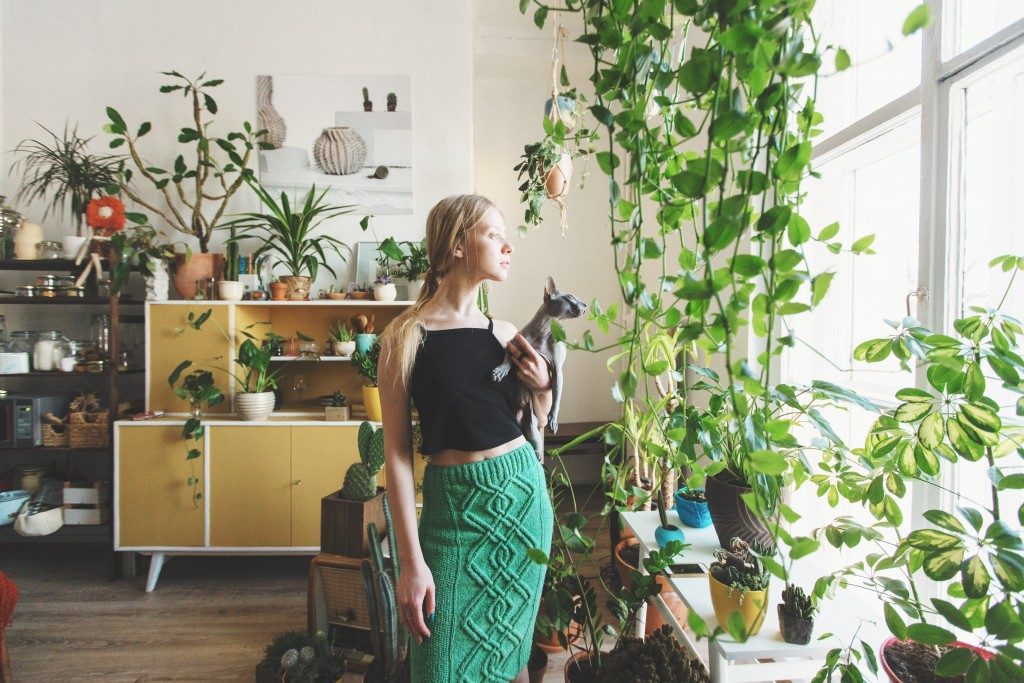The word “biophilia” was first used by Erich Fromm in 1964. It refers to the instinctive connection we feel with nature and people’s eagerness to be close to it. Due to the increased popularity of integrating nature into modern spaces, this term is now commonly associated with interior design. And here are some of the ways you can design a biophilic space:
Allow ample natural light through windows
Your space would need as much natural light as possible. Even office spaces should still have enough natural daylight, because fluorescent lighting may cause eye strain, headaches, and increase exhaustion at the end of each working day.
To maximise natural light in any room, the windows should not be fully covered by blinds. Windows that face east and west could receive enough daylight during mornings and evenings. In winter, south-facing windows can allow the most sunlight and less direct sunshine in the summer, especially if they are properly shaded. North-facing windows are likely to admit relatively even, natural light in any season, and produce little glare without gaining unwanted heat in the summer.
Feature materials that evoke nature
Choose natural materials for your decor and furnishings, such as wood, leather, bamboo and cotton. For walls and floors, you can have natural textures by using materials like stone, granite, metal and wood. Metal light fixtures also help evoke nature inside your home.
The color scheme of your design helps evoke nature too. The best nature colors would be earthy tones, such as tans, browns, golds and greens. Light shades of blue and white could also mimic the sky, clouds and sea. Instead of geometric and symmetrical shapes, using furniture with organic, irregular shapes would give off a more natural vibe.
Glass can balance nature with modernity
The structures in your space must ideally look light and easy, and glass could easily achieve this. Glass decor, furniture, doors, and windows would give the space a modern touch. But having everything in a room made of glass may not be entirely biophilic. Use glass to balance out rooms that might seem to have a very dominant natural material, like if the floor, walls and furniture in a room are all predominantly made of wood.
Glass is also great for railings in balconies, terraces, decks, and staircases. Glass railings may be particularly attractive for commercial stairs too, as it could make the space seem more modern and inviting yet authoritative.
Real and artificial plants

Nature can be effortlessly brought into any space through plants. Indoor plants in home spaces are easy to have, but this might be more difficult for office spaces. Although they could not improve air quality, artificial plants may also provide a biophilic effect in the workplace. It would be best for commercial spaces to have real plants, so you may use a mix of artificial and natural flora in your design. Succulents are ideal indoor plants for offices and homes, as well as bamboo palm, lemon balm and spider plant.
Whether at home or in the workplace, biophilic designs are meant to help put us at ease and enhance our mood and performance. However, make sure that the space you are designing would still be highly functional and conducive to the work and lifestyle of its occupants.

